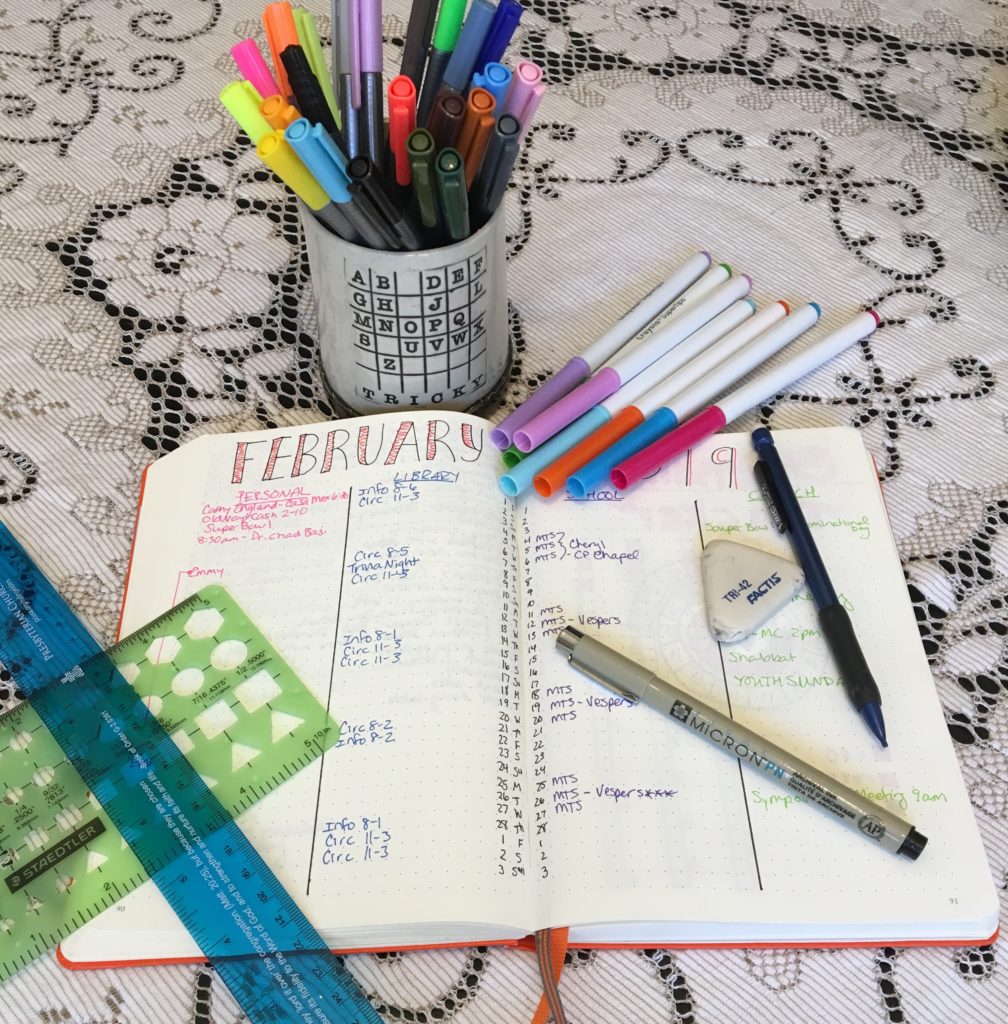
A professor in one of my classes asked an open-ended question a few weeks ago, and my hand shot right up for my chance to contribute.
“What do you do to manage the chaos in your life?” she asked the class, made of adult seminary professionals.
She called on me, noting my eagerness.
Boldly, I proclaimed, “Recently I’ve started using a Bullet Journal, and I’ve really become so much more organized and productive and efficient through the process.”
I’m sure I won many accolades from my stressed-out, overworked colleagues in ministry, and may have received a few eye rolls. (I probably deserved them, too! Ha!)
But I do feel strongly that the Bullet Journal method has helped me tame some of my disorganization and has helped keep me focused on successfully navigating the stress and anxiety that comes my way. I work two jobs, and travel out of town for weekly graduate school classes. There’s a lot on my plate, and that’s not counting personal endeavors.
I used to live a life littered in sticky notes, making lists but often forgetting to check them twice. I’d have documents started in my email drafts folder as part of my scattered brainstorming activities, or snippets of notes typed on an app in my phone. I’d buy cute notebooks at TJ Maxx or Target, use them for a couple months, then get distracted by a new one, leaving important notes and planning elements scattered in drawers, boxes and bookshelves around my house. I desperately wanted to journal my experiences, but lacked the follow-through to develop a meaningful and sustainable practice.
But in 2018, the varied avenues of my life began to converge. I began Praying in Color, which led to a love of creative and artful ways to pray, meditate, and study scripture — all bound in a notebook. Inspiration photos on the Internet led me to other inspiration photos of this new way of using planners and journaling called a Bullet Journal (BuJo for short). I was already slightly familiar with this process, as a former coworker at the library was Bullet Journaling with some fabulously artistic and productive layouts. I was so busy, and operating off of so many lists, that I was desperate to simplify.
I also couldn’t pick out the perfect planner when the new designs came out in the fall. Turns out I am quite picky!
Screen time was becoming an issue for me — I spend so much time attached to a computer, my iPad, and my phone, that anything I can do to take my nose out of the blue light is a positive thing.
So enter Ryder Carroll and the Bullet Journal Method (you can find more at his website www.bulletjournal.com or read his NY Times bestseller “The Bullet Journal Method”). Carroll, an NYC creative, developed this concept after struggling with various learning disabilities and found the way he organized thoughts and events could be beneficial not only to himself, but to others.
According to the Bullet Journal website: “It’s best described as a mindfulness practice disguised as a productivity system. It’s designed to help you organize your what while you remain aware of your why.”
In a nutshell, my Bullet Journal is my planner/calendar, my diary, my record-keeper, my to-do list and really anything else I need it to be.
I’ve been devotedly working in my BuJo since November, and I’ve seen an increase in my productivity, and increase in my spiritual health, and even an increase in my physical health. I’m simply a happier human with this book in my hand, if not a more organized one. I’ve inspired my sister to start a BuJo, and a coworker and I gave a presentation at the public library where we work, detailing the art and magic of the Bullet Journal Method.
Maybe you’ll like it, too.
Basic supplies needed: a pen and a notebook
Of course, the supplies can be more specific. Dot journals are the preferred notebook of choice — they can be found for as cheap as $5 at stores like Michaels, or $20 for a “luxury” brand like Leuchtturm 1917 or a Moleskin. I’ve been using the Leuchtturm, but I believe I am going to transition to something more affordable.
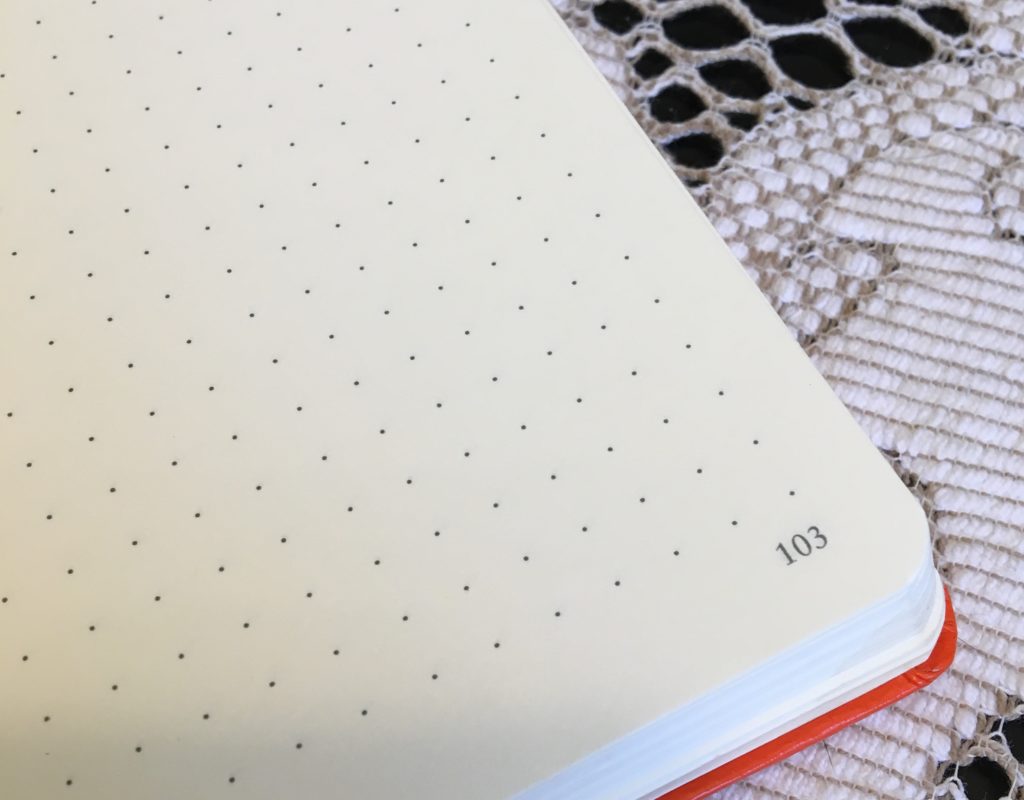
And while ballpoint pens are just fine, I’ve invested in pigment/archival ink pens that work not only for my Bullet Journal, but for my prayer journal and Praying in Color endeavors. The ink is more permanent and doesn’t bleed or smear. I also keep a full collection of Crayola SuperTips and Staedtler Triplus Fineliners to add color to journaling and planning. (coupons for places like Michaels and Office Depot helped me score both sets of markers for less than $20 total)
The Bullet Journal Method is nuanced and takes some time to understand and navigate. You first learn to Rapid Log — taking quick notes using bullets, dashes, and other symbols and leaving out the extraneous verbiage. It simultaneously takes out the extra, but adds in more content because you are more apt to quickly jot down a note, an inspiration, or an event rather than long-form write about those things.
You Bullet Journal begins with an Index – a table of contents – that will help you keep track of your Collections (items that keep you organized, inspired, and on task). Pages should be numbered.
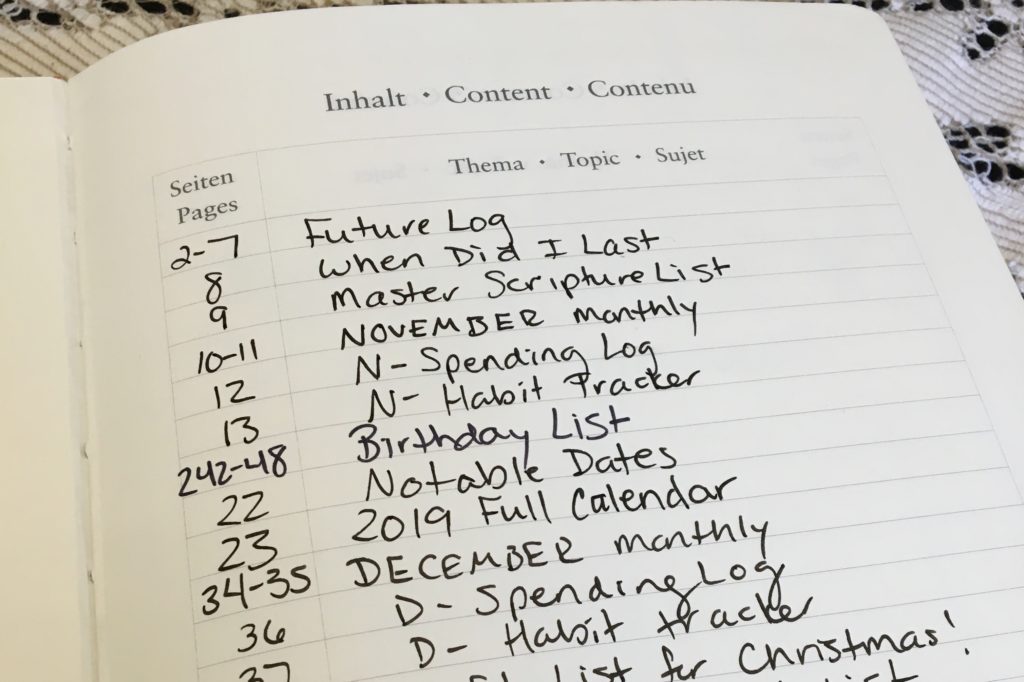
A Future Log is where you keep track of events and tasks throughout the year.

The Monthly Log details events and tasks for the current month. The Weekly Log breaks things down a little more and is optional.
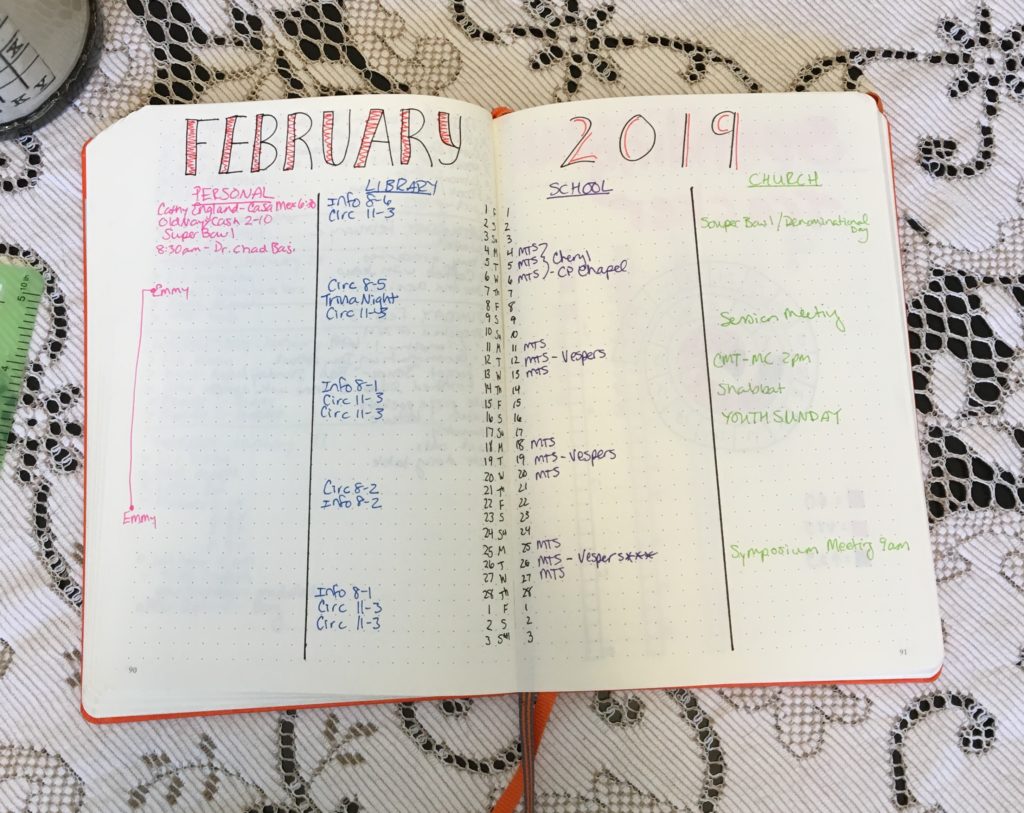
The Daily Log is the work horse of the whole system. It is here where you begin to put the Rapid Log into use, keeping track of your tasks (bullets), your notes (dashes), your events (open circles), and other items with symbols such as stars, exclamation points, etc. If a task is completed, you cross over the bullet with an X. If it does not get completed, and needs to be tabled to the next day or next week, you “migrate” the task using an arrow, and re-writing the task at the time you want to approach it next.
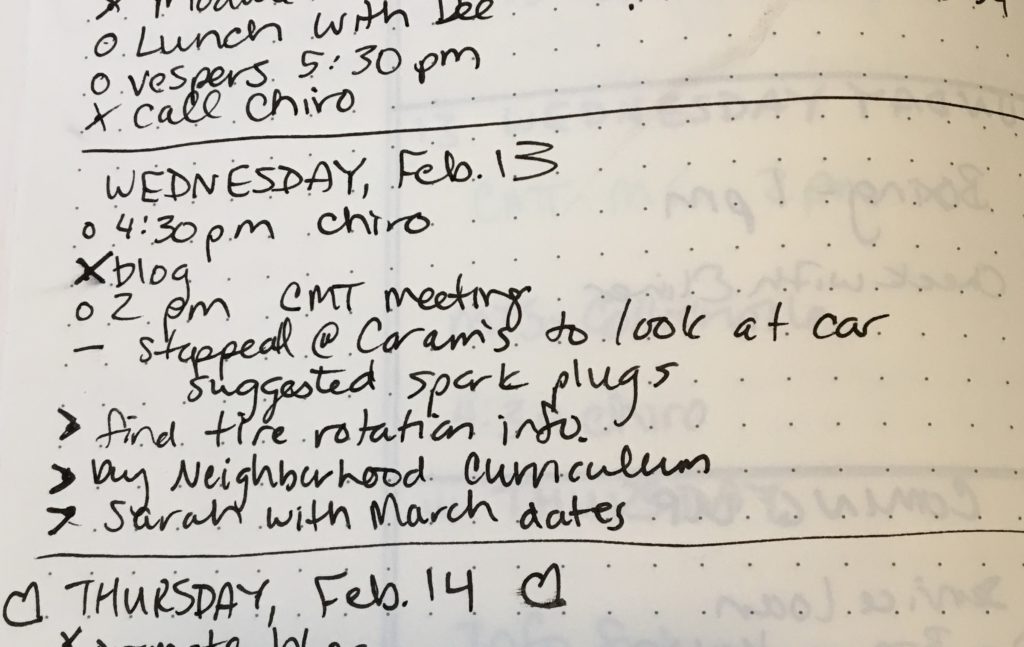
The incentive for completion of tasks and migration of tasks is that it becomes a hassle having to re-write an unperformed task on the next day’s log. And there’s something therapeutic about crossing things off a list, incentive in itself!
There are also what are known as Custom Collections. These are pages (or groups of pages) that help you organize, plan, brainstorm, take specific event notes, that you will want to come back to and either add to or use as a resource for future projects. These Collections could be as simple as a list of Birthdays, or habit trackers for things like step-goals, water intake, and spending fasts, menus, books you’ve read or movies you’ve watched.
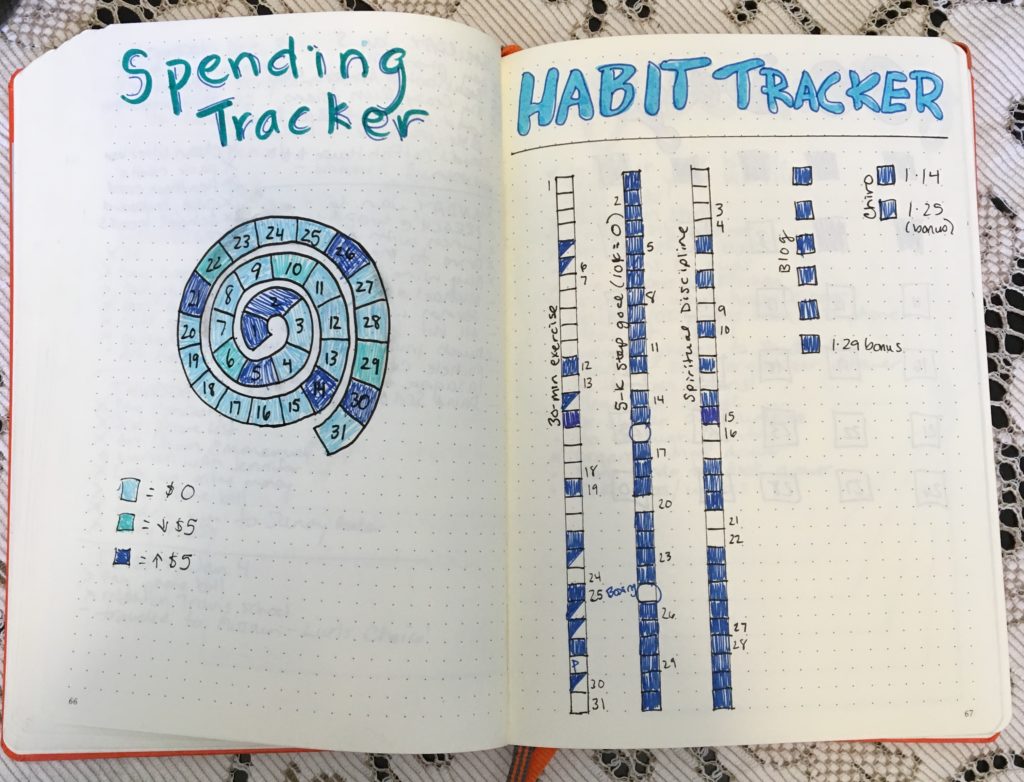
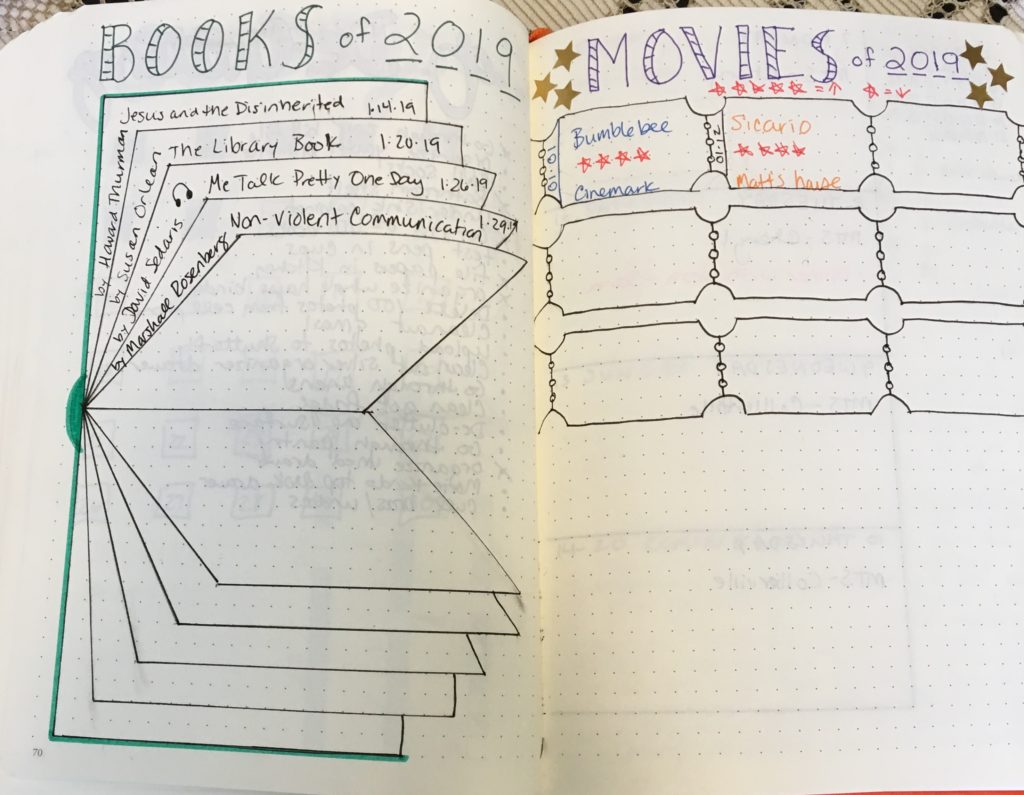
My BuJo comes out at meetings so I can take notes. It comes out on Sunday mornings where I’m taking sermon notes for the first time in my life. It’s helped me plan parties, make grocery lists I keep with me, and even helps me remember to get my tires rotated or workout for the day.
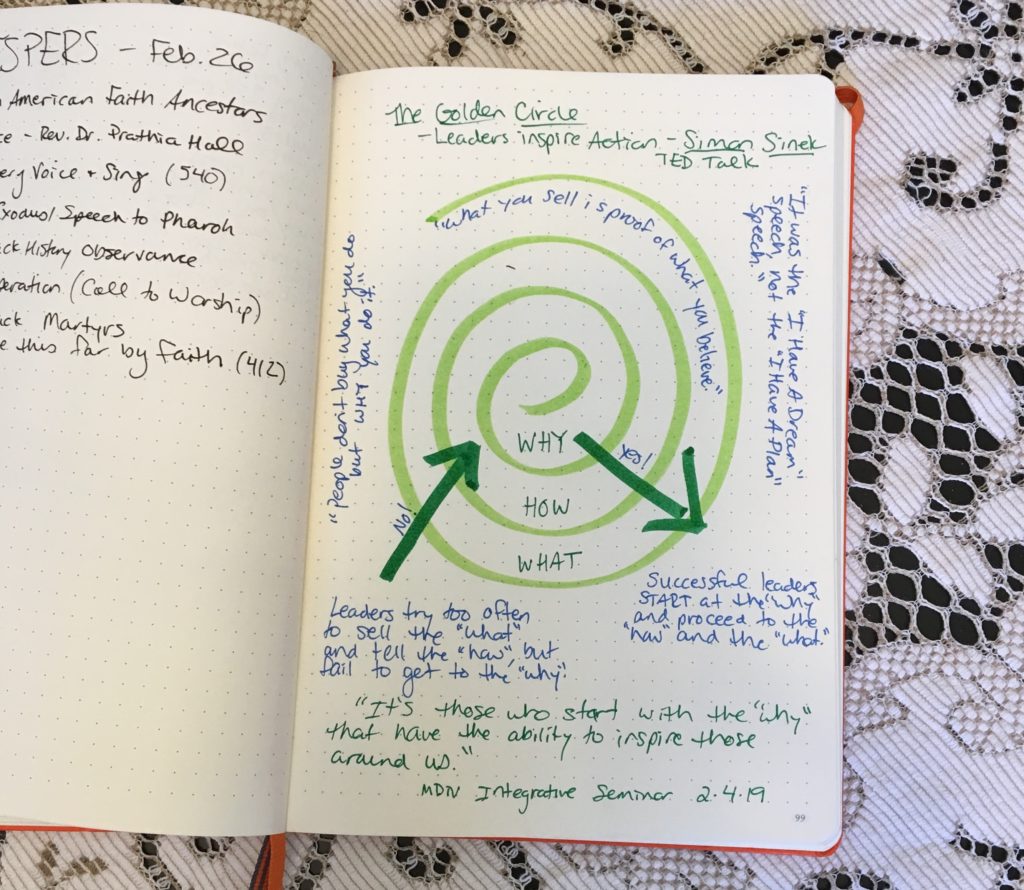
The nice thing about the Bullet Journal is that it is completely customizable. You get to put into your planner/journal whatever it is that makes you happy and productive, and leave out all the formats and things that stress you out. Sure, there are some amazing art collections circling online, but yours doesn’t have to be artistic at all. Mine isn’t as artful as I would like, but it’s functional, and I’ve at least made it colorful, and that makes it more fun.
Look into it. Maybe the Bullet Journal Method will work for you!
~ Dusty

Thank you so much for introducing me to the Bullet Journal method! I love it and can’t imagine my life without it now!
I need to look into this.